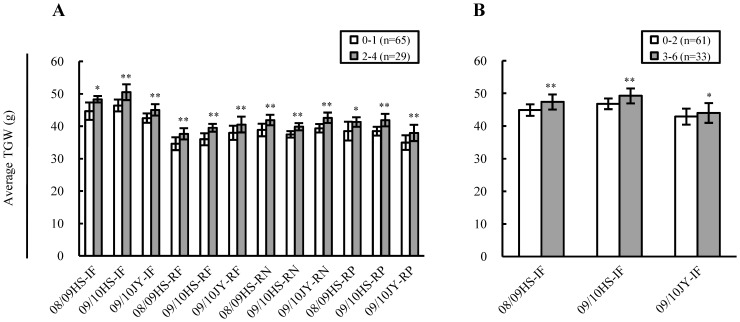Figure 6. Assessing potential additive effects among the elite alleles of the associated loci on thousand-grain weight (TGW) (g).
Assessment was carried out for the five loci associated with TGW in environment-independent (EI) manner and for the total number of loci associated with TGW in the irrigated and fertilised (IF), rainfed (RF), reduced nitrogen (RN), or reduced phosphorus (RP) environments. In each assessment, the 94 varieties were split into two varietal groups differing appropriately in the number of elite alleles. The number of lines (n) in each varietal group is provided in brackets. *and **indicate statistical significance at P≤0.05 and 0.01, respectively. (A) Assessing additive effects among the elite alleles of five EI loci. The highest number of EI elite alleles detected in a single variety was four. Therefore, the 94 varieties were split into two groups, with 0–1 and 2–4 elite alleles of the EI loci, respectively. The average TGW of the varietal group with 2–4 EI elite alleles was generally and significantly higher than that of the group with 0–1 EI elite allele across all 12 environments. (B) Examining additive effects among the elite alleles of the loci associated with TGW in the IF environments. Although the total number of associated loci under IF treatment was nine (including five EI and four IF specific loci), the highest number of elite alleles found in a single variety was only six. Thus, the 94 varieties were divided into two categories, carrying 0–2 and 3–6 elite alleles of the associated loci, respectively. The average TGW of the varietal group with 3–6 elite alleles was generally higher than that of the group with 0–2 elite alleles across the three IF environments. Using the same approach, substantial additive effects were also detected among the elite alleles of the loci associated with TGW under RF, RN, or RP treatments.

